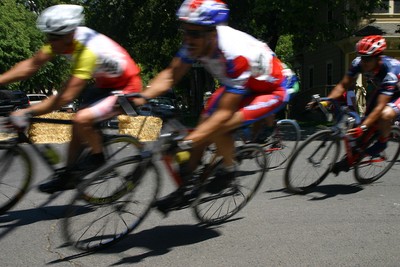 Cycling, particularly road racing, is hugely popular across Europe with events such as the Tour de France, Giro d’Italia and the Vuelta a Espana attended in their thousands each day, with millions viewing on television.
Cycling, particularly road racing, is hugely popular across Europe with events such as the Tour de France, Giro d’Italia and the Vuelta a Espana attended in their thousands each day, with millions viewing on television.
Thanks to Olympic success of athletes such as Laura and Jason Kenny alongside Tour victories for Bradley Wiggins, Chris Froome and Geraint Thomas, the profile of cycling in the UK has rocketed.
The three Grand Tours dominate the calendar but there are also betting opportunities outside of this with road races throughout the year and track races during the Olympic games and World Championships.
When available, we’ll show all the top cycling offers below.
Latest Cycling Betting Offers & Promotions
Please note: Most promotions will be available during the main races such as the Tour de France and the Giro d'Italia.
How To Bet On Cycling
There are range betting options when it comes to cycling. We’ll go through the main markets in more detail below.
Outright Winner
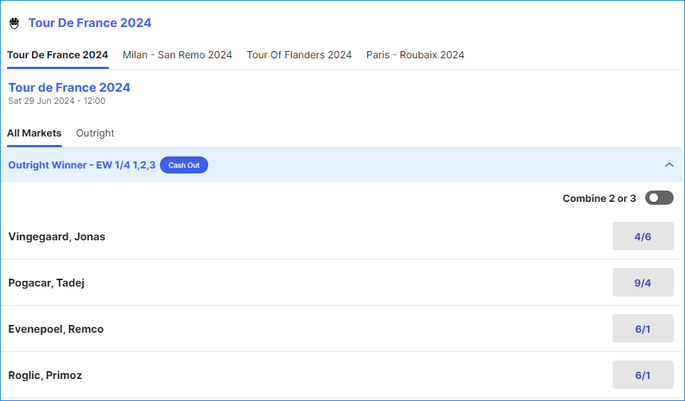
Cycling is just like any other sport, insomuch as there is a winner of each competition that you might be looking to place bets on. As a result, you can bet on that outright winner, which means that you are placing a wager on the person who is considered to be the winner of the overall even across numerous different stages. It can be a complicated thing to bet on if you’re not too sure how cycling works, on account of the fact that there will be different winners of each individual stage as well as a winner of the entire event, which can lead to some confusion when you’re looking at results.
Obviously what you’re betting on is the overall winner full-stop, so it might be worth investigating how the event in question decides the winner before you place your bet. If you have a feeling who you think might win but aren’t 100% sure, you can opt for the Each-Way bet on the outright winner market, which will see you get paid out at least some money provided your chosen rider finishes within the places. As with the likes of horse racing, how many places will be paid out on will depend on the event that you’re betting on and the bookmaker you’re betting with.
Betting On Different Classifications
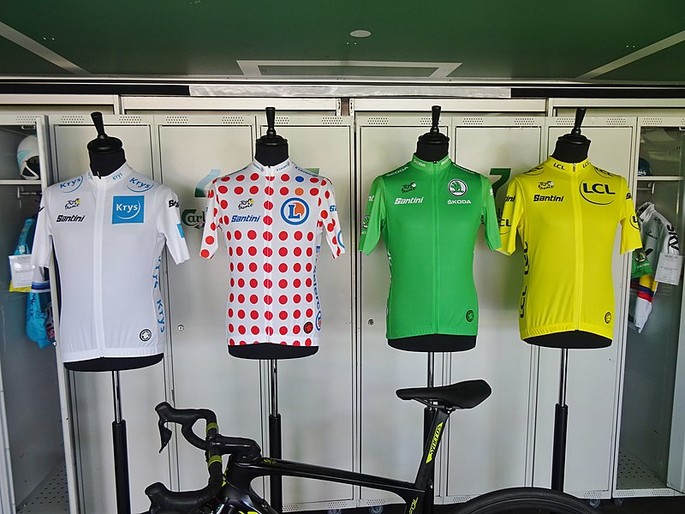
The Tour de France has Young Rider (white), Mountains (polka dot), Points (green) and General (yellow) classifications. Photo by Leif Jørgensen, Wikimedia Commons
Cycling events tend to have numerous different classifications that can be won during the course of the event. This means that there is more at stake than just the overall winner of the competition. As a bettor, this provides you with numerous opportunities to place a few different wagers, such as the points classification. A bet on this is basically a bet on which cyclist will win the most points and therefore the green jersey, which isn’t the same as being the overall winner. Similarly you could bet on the winner of the King or Queen or the Mountains, which is awarded to the best climber.
Each of the various classifications that you can bet on will have its own quirks and rules that you’ll want to get to grips with. You can bet on the young rider classification, for example, which is a competition limited to those riders under 26 years of age. Some riders are particularly good at one aspect of a race, such as sprinting or climbing, so the best thing to do is to do some research and find out whether there is one thing that your chosen rider is good at and look to place a bet on them achieving it. There is plenty of information out there to aid you with this research.
Match-Ups
Cycling match-ups work in a similar way to match betting in sports such as horse racing and golf
Cycling is often not a team sport, so bookmakers add a bit of interest to proceedings by allowing you to bet on the winner of various match-ups. In essence, this is a bet on which rider will finish higher in the rankings between two riders. You are looking to find the rider that will end up higher in the leaderboard than the other at the end of the stage or event. In other words, they don’t need to be the overall winner of the entire competition, they just need to be higher on the leaderboard than the rider that they have been matched up with, which will lead to you winning your bet.
There are two different match-up options that tend to be offered by bookmakers, with one of them being for the various stages of the competition and the other being for the competition as a whole. This is relatively self-explanatory, with the former being limited to each individual stage of the competition and the latter being for when the event comes to a close. Make sure that you know what you’re betting on before you place your wager and do some research to discover whether a rider is particularly good at one stage of a competition compared to another.
Number Of Finishers
Cycling events are tough. They ask a lot of the competitors and it is not unheard of for riders to fail to make it to the end. As a result, some bookmakers will offer you odds on the number of riders that will complete all stages of the overall race. They don’t need to win it in order to count towards the outcome of this bet, just make it to the end. This is a wager that tends to be offered on the Over/Under, with the size of the race itself dictating the numbers that you’ll be offered to bet on. The likes of the Tour de France, which is one of the biggest races around, offers about 160.5, as an example.
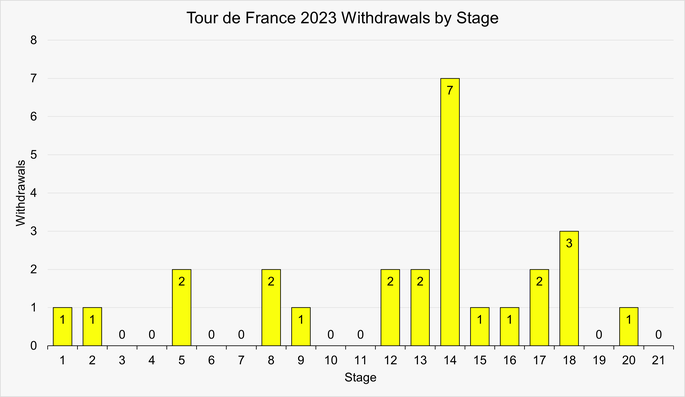
Some bookmakers might offer you the chance to bet on the number of finishers for individual stages, which is especially the case if the race tends to be one in which the stages present the riders with a real challenge. This isn’t all that common, though, so don’t be surprised if it isn’t offered by your bookie of choice. Of course, that doesn’t mean that what you think about the likely number of finishers in each stage doesn’t matter. It is the sort of information that you can collate to decide how many people you think will finish the race overall, which is a standard bet.
How Many Riders Will Get The Main Jersey
When it comes to major cycling events, there is little that matters more than being able to wear the main jersey. That is an honour limited to the riders that lead the way at the end of each stage, so it is possible that numerous different riders could enjoy the honour. As with the number of riders to finish the race, the size of the race in general will be what decides what the numbers are for the Over/Under on this market. The line tends to be around the 4.5 or 5.5 area, which is often down to how many stages there are during the race because the more there are the more chances riders will have.
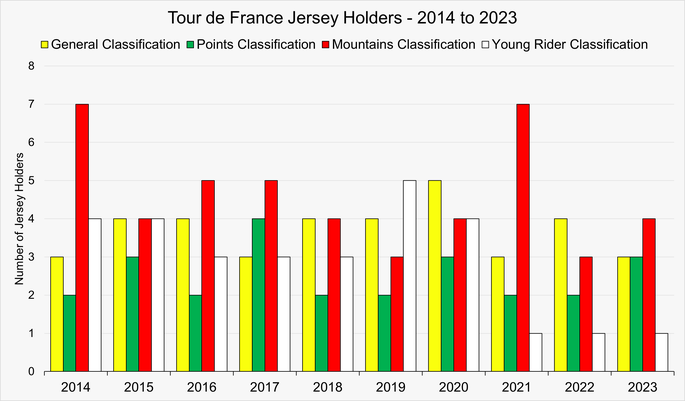
Once again, research is your friend here. There is plenty of opportunity to look at how riders have gotten on in previous competitions. In the biggest races, you’ll even be able to see how they’ve coped with the specific event that you’re looking to bet on. Not only that, but it is worth having a look to see how many people have won the yellow jersey over the course of previous Tour de Frances, for example. You can look to see how many riders had the honour of the Pink jersey in the last five Giro d’Italia, say, and use that as a guide before you look to place your wager on this year’s event.
What You Need To Know
If you don’t know a huge amount about cycling, the idea of betting on it can seem simple enough. The reality is, though, that it is actually a complicated sport on account of how it actually works. There are, for example, numerous different categories of bike riding that you might be able to bet on, depending on how your bookmaker treats it. BMX is extremely popular, for example, whilst there are numerous different bike riding events that come about when the Summer Olympics is on and bookmakers are often keen to be able to offer you odds on them.
What we’re mainly interested in is the road racing discipline that the likes of the Tour de France fits into. These races are primarily held on paved roads and it is the most popular form of professional bicycle racing when it comes to the number of competitors, how many events there are and the amount of people that tend to watch. Even this isn’t a simple thing to understand, given the fact that you can have both mass start events, where everyone begins the race at the same time, and time trials, involving the riders going up against the clock as well as each other.
Different Race Types
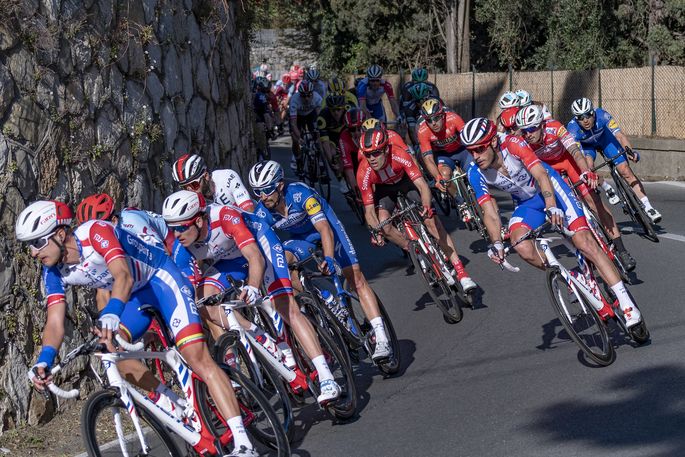
Milan-San Remo is a one-day road cycle race. Photo by Franco Verda, flickr
There are numerous different race types when it comes to road racing. Single-day races can be as long as 180 miles, for example, with courses running from place to place or just being laps of a circuit. Individual time trials see cyclists race against the clock, either on flat or more challenging terrain. Team time trials can also happen in events, though they tend to be their own thing. In time trials, the various participants start the race at different times, which is convenient because they don’t need to physically race against one another as it’s only the clock that matters.
Stage races are amongst the most common race types when it comes to the big events. These are essentially several races put together, with each race being a ‘stage’ of the competition that riders have to take part in. They are ridden consecutively, with the winner being the rider that has been able to complete all stages in the lowest cumulative time. In other words, they don’t need to be amazing at every single type of stage, but it is beneficial if they are good at all stage types and exceptional at a few of them, given that this will give them the best overall time.
Race Stages
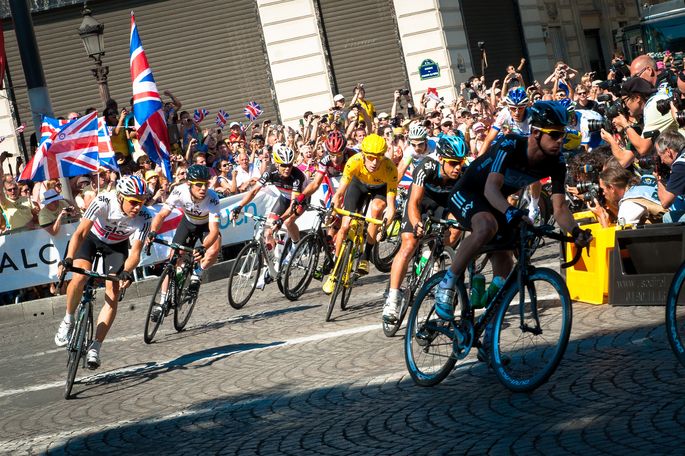
The final stage of the Tour de France famously finishes along the Champs-Élysées in Paris. Photo by Josh Hallett, flickr
If you’re looking at placing a bet on a stage race then it would be helpful to know what the actual stages are. It is all well and good knowing that riders will have to be decent at all of the various stages, but it is another thing entirely to know what those stages actually are. In reality, it is largely dependent on the actual race, given that they can all offer their own stages to test the cyclists. That said, we can look at the stages that are most typical in stage races to get some idea of what to expect and the sort of thing you’ll want to know if your chosen cyclist is good at.
Mountains
The mountains classification is one that asks riders to cope with the difficulty of climbing steep and long hills. Points tend to be awarded to the first rider that reaches the top of the climb, with other points available to as many as ten riders that make it up the quickest. Climbs are often classified according to their length and steepness, with the harder climbs receiving more points. Depending on the race, it is possible that the best climber will be awarded a different coloured jersey to wear until the next climb, alerting everyone to who did the best during the climbs.
Mass-Starts
In some of the big events, there are mass-starts at various events. It can be a ‘hilly’ start, for example, or a ‘mountain’ start, with the riders having to cope with everyone trying to get off at the same time. You will sometimes find there are bonus points awarded for how quickly cyclists are able to complete the stage that comes after a mass-start. There will sometimes be a sprint through a certain section of the track, for example, that comes immediately after the mass-start. It is a chance for the participants to earn some points that will go towards the overall classification.
Individual Time Trials
Individual time trials are designed to test the mettle of the riders in the race. The course that the individual time trial takes place over is normally a relatively short one, with the winner being the cyclist that is able to complete it over the shortest amount of time. Any bonuses are added to the points that the cyclist has received during the time trial in order to ensure that their performance is recognised in the final standings. Again, the best performing riders in the individual time trials are often given a jersey to denote the fact that they are the best cyclists in the category.
The Main Races
As you can imagine, there are some races that are always likely to garner more attention than others. These are the ones that the bookmakers are most likely to offer you odds on, given that they tend to be the main ones that most people are happy to tune in and watch. Here is a look at them:
Tour de France
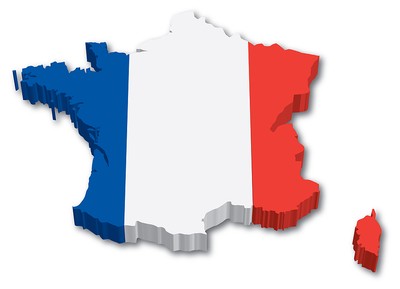 This annual race is one that takes place primarily in France, although parts of the race have taken place in other countries. It is the oldest of the three Grand Tours, considered by many to be the most prestigious of them. It was originally organised back in 1903 with the aim of arranging more sales of the newspaper L’Auto, growing to become one of the biggest cycling races in the world. The more prominence and prestige it gained, the longer it took place over and the more international participants joined in. Nowadays it is a UCI World Tour event, with some teams taking part by invitation.
This annual race is one that takes place primarily in France, although parts of the race have taken place in other countries. It is the oldest of the three Grand Tours, considered by many to be the most prestigious of them. It was originally organised back in 1903 with the aim of arranging more sales of the newspaper L’Auto, growing to become one of the biggest cycling races in the world. The more prominence and prestige it gained, the longer it took place over and the more international participants joined in. Nowadays it is a UCI World Tour event, with some teams taking part by invitation.
The majority of the race tends to take place in July, with the route changing each year. Even so, the format of the race tends to remain very much the same, featuring time trials, mountain climbs and a finish on Paris’ Champs-Élysées. It is common for between 20 and 22 teams of up to eight riders to compete in the Tour de France. It is all about finding out which rider has the best cumulative time throughout the race, with said rider being awarded the yellow jersey to ride during the following stage of the race. There are also other jerseys for the other classifications that can be won.
Whilst the Tour de France is, as the name suggests, a race held in France, there have been some parts of the race that have actually taken place elsewhere. Hosting the Grand Départ, which is the prologue and the first stage of the race, is seen as extremely prestigious. Even just having the Tour passing through a town or village can see it shutdown for a period of time, with a festive atmosphere common. It has been common for the Tour to visit nearby areas outside of France since the 1950s, with the likes of the Netherlands, Belgium and the United Kingdom all hosting parts of the Tour over the years.
Giro d’Italia
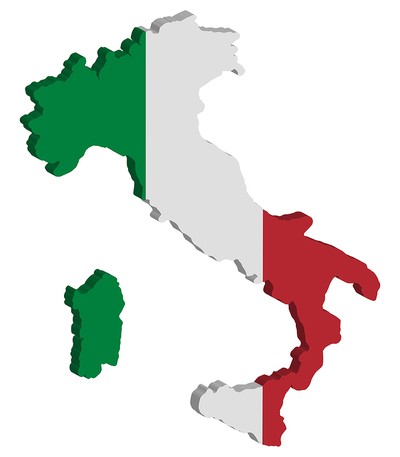 The Tour of Italy, which is known as the Giro d’Italia, is a multiple-stage event that is something of an Italian equivalent to the Tour de France. Following in the footsteps of L’Auto, La Gazette dello Sport organised the race in 1909 in order to try to increase sales of the newspaper. To this day, the event’s organisation is taken on by a subsidiary of the newspaper. As with the Tour, it is a UCI World Tour event, with the majority of the participating teams being UCI WorldTeams and others being those that have been invited to take part.
The Tour of Italy, which is known as the Giro d’Italia, is a multiple-stage event that is something of an Italian equivalent to the Tour de France. Following in the footsteps of L’Auto, La Gazette dello Sport organised the race in 1909 in order to try to increase sales of the newspaper. To this day, the event’s organisation is taken on by a subsidiary of the newspaper. As with the Tour, it is a UCI World Tour event, with the majority of the participating teams being UCI WorldTeams and others being those that have been invited to take part.
As with the Tour de France and the next race we’re going to talk about, the Vuelta a España, it is one of the races that makes up the Triple Crown of Cycling. Taking place over three weeks, it tends to be held in May and can sometimes stretch into June. The route changes on a yearly basis, but the format remains the same. That sees two time trials taking place along with a passage through the mountains, including the Dolomites. Typically speaking, the Giro d’Italia has 21 stages that are held over a period of 23 or 24 days, including a few days of rest for the riders.
Where the Tour de France has the yellow jersey for the top rider, the Giro d’Italia’s is a pink jersey. There are also jerseys of various colours for the likes of winner of the mountain classification, the points classification and the young rider classification. Being able to wear one of the jerseys is what each rider in the classification will want to do, such is the honour and prestige that comes with it. Ultimately, though, the riders will all want to be crowned the best rider thanks to riding the race in the quickest overall time when the final stage of the event is complete.
Vuelta a España
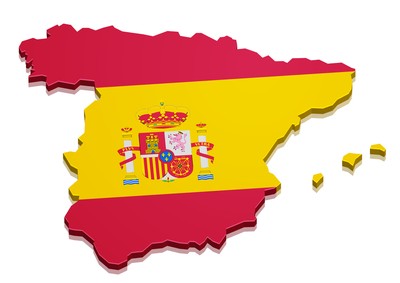 As the name suggests, the Vuelta a España is the Tour of Spain, taking place predominantly in that country and with occasional trips into nearby countries. This is the final race that makes up the Triple Crown of Cycling and it is also the youngest, having first taken place in 1935. Unlike the other two, the race was not created in order to help a newspaper gain more sales. Instead, it came along because of the success of the Tour de France and the Giro d’Italia. It was prevented from taking place thanks to both the Spanish Civil War and the Second World War, but has occurred annually since 1955.
As the name suggests, the Vuelta a España is the Tour of Spain, taking place predominantly in that country and with occasional trips into nearby countries. This is the final race that makes up the Triple Crown of Cycling and it is also the youngest, having first taken place in 1935. Unlike the other two, the race was not created in order to help a newspaper gain more sales. Instead, it came along because of the success of the Tour de France and the Giro d’Italia. It was prevented from taking place thanks to both the Spanish Civil War and the Second World War, but has occurred annually since 1955.
Matching the other two big European events, the Vuelta is a UCI World Tour event and UCI WorldTeams tend to take part in it, alongside some wild card teams invited by the organisers. It runs for three weeks across the challenging terrain of Spain, keeping the same format each year even whilst the route is changed. There are at least two time trials, a race through the Pyrenees and it draws to a close in the Spanish capital of Madrid. There are usually 21 stages that take place over 23 days, with two rest days in there to allow the riders some small recovery periods.
The race originally took place in late April and sometimes June, but in 1955 it was moved to September so as not to be a direct competitor for the Giro d’Italia. As a result, the Vuelta a España is seen as a good preparation event for cyclists looking to take part in the World Championships. All of the stages are timed, with the times put together at the end of the race in order for the general classification to be awarded with the associated red jersey. Riders that specialise in sprints, mountain classification and combination classifications will also receive recognition.
